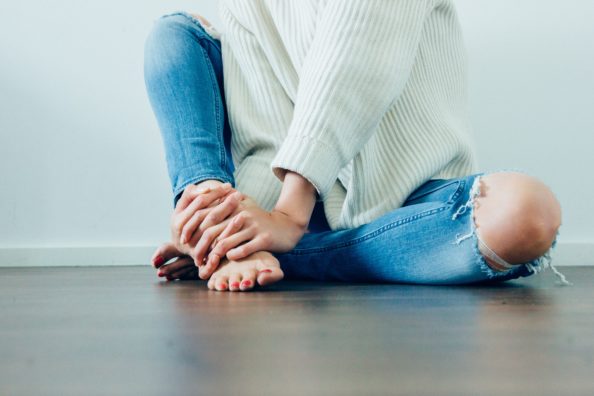(512) 416-7700 | CONTACT US | MAP

With a prevalence of 22.7% (54.4 million), some of us are a little too familiar with joint pain, but few know its causes. The truth is it’s not always arthritis and osteoarthritis. Pains that seem to be coming from joints can sometimes be coming from structures outside the joints, such as ligaments, tendons, or muscles. Many things can contribute to joint pain, but the primary source is often damage or dysfunction of ligaments, tendons, and bursa surrounding the joint. Examples of such disorders are bursitis and tendinitis as well as irregular biomechanics.
Irritation or damage to any of these structures leads to inflammation, and ultimately, muscle and joint pain. It is easy to understand how these structures are irritated or damaged by traumatic injury (like a fall). What if you didn’t have a traumatic injury? What if you just picked up something “wrong,” walked a little too far, or woke up with muscle or joint pain one day? How do these structures get damaged slowly without your noticing? Damage or irritation to a ligament, tendon, or bursa can begin when muscles become inhibited or shut-off. Furthermore, when muscles are not working correctly, it alters how your joints move. This incoordination (or irregular biomechanics) can irritate the surrounding joint structures, and cause pain in and around your joints.
Proprioceptive centers in muscles that monitor stretch, tension, motion, and pressure are designed much like a circuit breaker. If a circuit overloads, the breaker shuts-off the circuit. When the muscle system is overloaded or inflamed, these centers “trip”, much like a circuit breaker. The stress may be either acute (traumatic) or cumulative (overuse). Once this sensory blind spot occurs, the nervous system protectively inhibits the muscle. This results in a loss of range of motion, pain, and weakness.
Each muscle is made up of muscle fibers – only the fibers engaged while exposed to an overload are disengaged. This is why deactivated muscles fire through passive and active ranges of motion. However, they are not strong enough to deal with large forces or surprising angles of force. Deactivated muscles will also fatigue quickly, leaving you at risk for further injury or more deactivation. If you continue to stress that muscle, you will get pain at the attachments, i.e. joint pain.
Most of the time, it will go away – that doesn’t mean your issue is fixed. It just means you will have to deal with it again later. The central nervous system creates an adaptive strategy to decrease tissue damage and gain stability: it passes on the stress to surrounding muscles. In other words, other tissues take on more load for the muscle systems that aren’t working properly. If your adaptation is successful, your pain goes away and you have a false sense that everything is fine. However, adaptation causes you to lose a level of efficiency, leading to decreased performance and an increased likelihood of injury. The adaptive muscles now become candidates for the next site of injury. Going from one injury to the next, you end up with an area with no more adaptive capacity. This becomes chronic pain and dysfunction.
As muscle function decreases, joints become unstable, and overuse injuries ensue. The body needs to create stability any way that it can. One way is for the muscles to splint, or tighten up. (This is one reason people have chronically tight muscles.) Tight muscles lose their flexibility and shock absorbing abilities, and the joint takes most of the stress. That constant stress on the joint accelerates degenerative changes. If degeneration is severe, the nervous system will further inhibit surrounding musculature in a process called Arthrogenic Muscle Inhibition. This is the path to joint destruction, and this is why joint replacement is prevalent.
Professional care:
Home care: